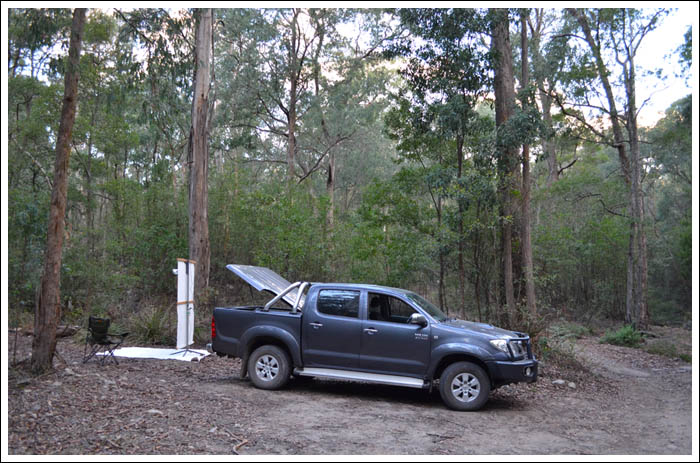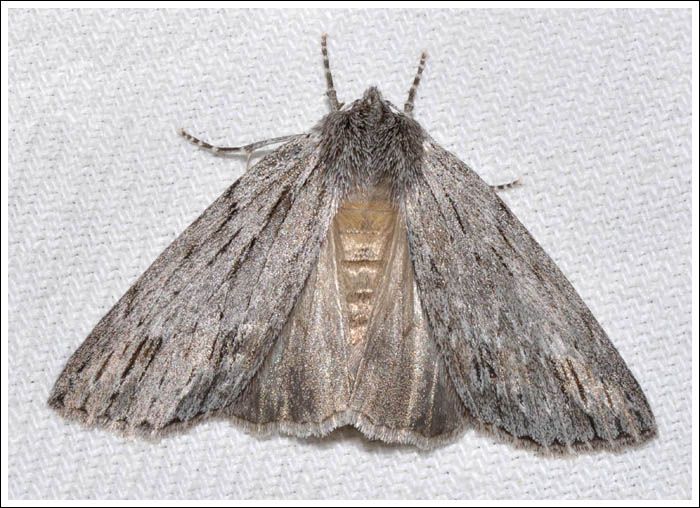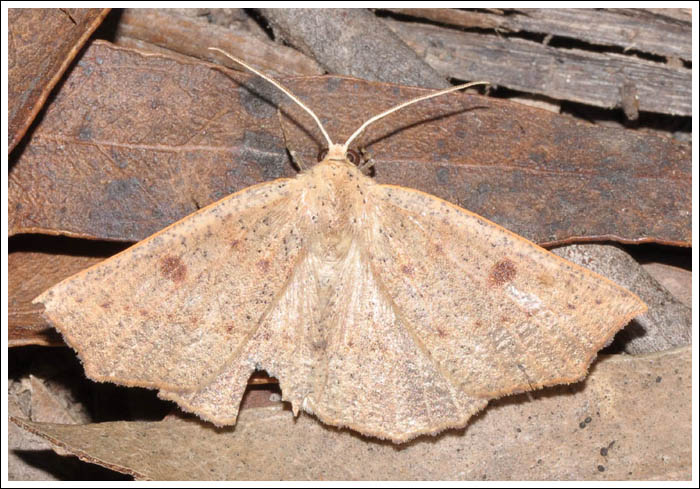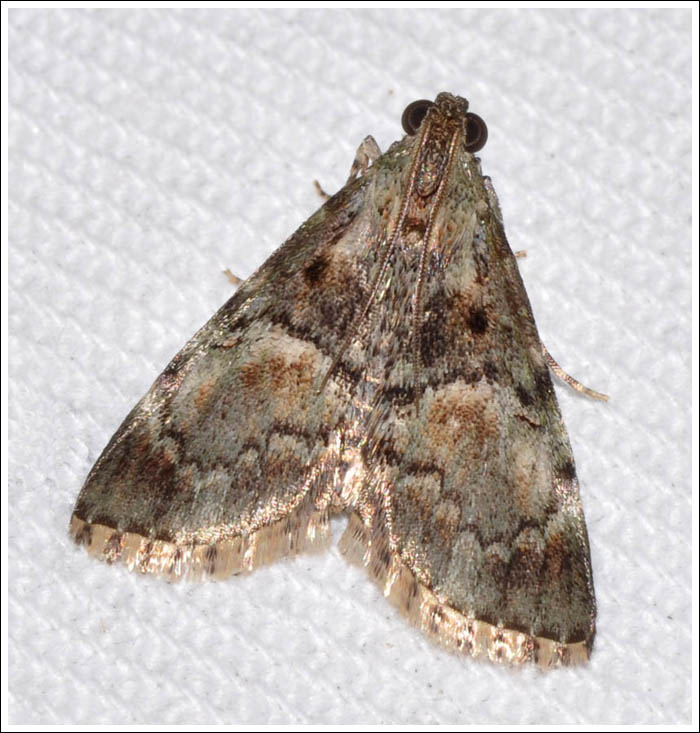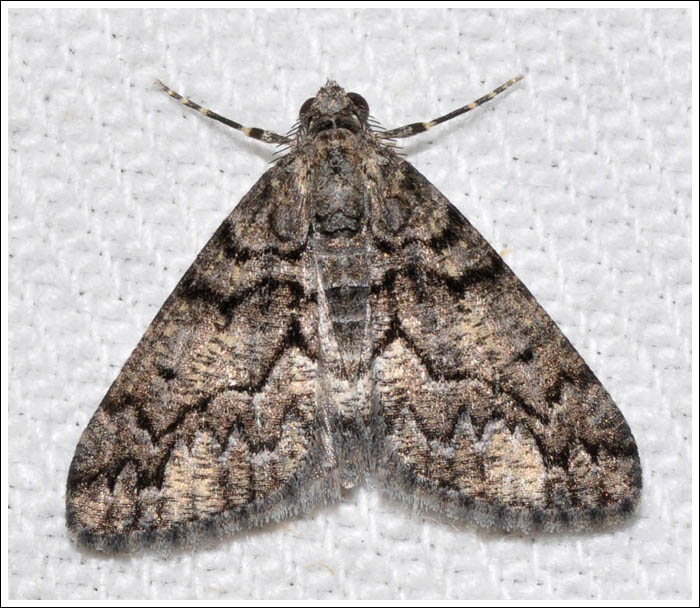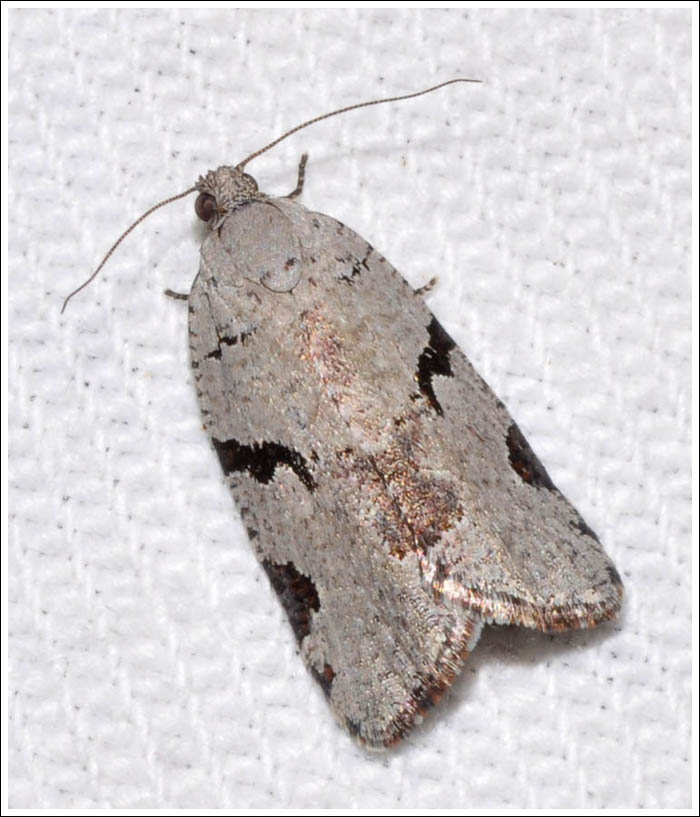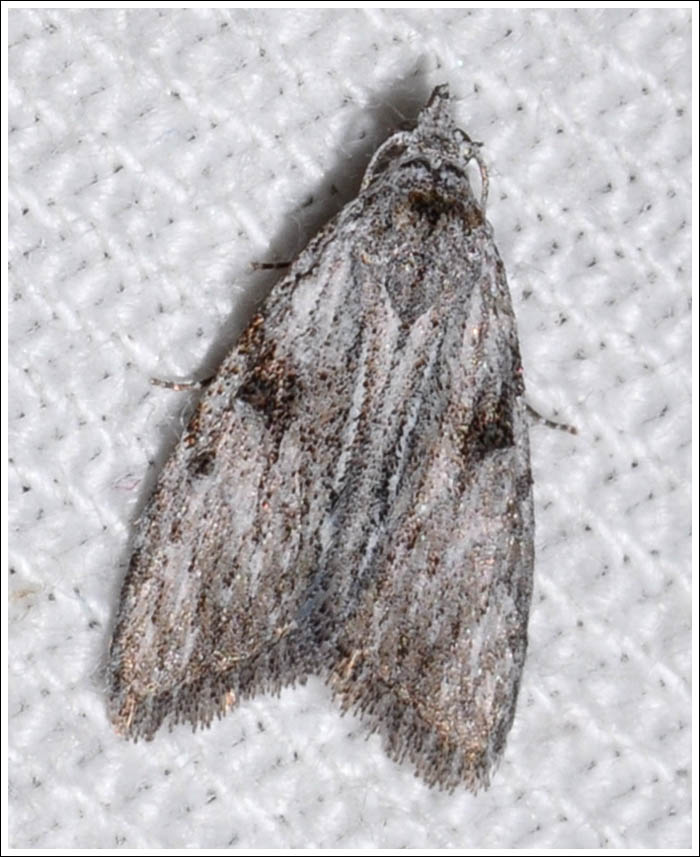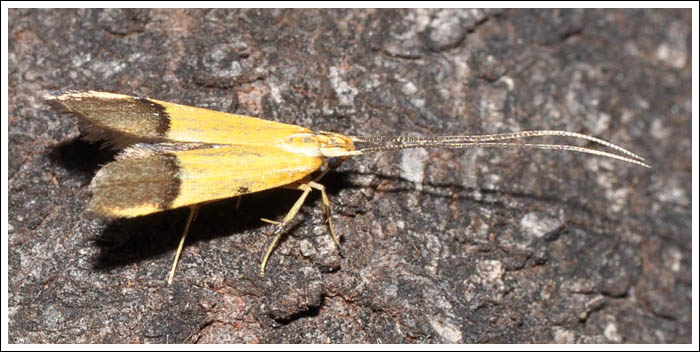With moth numbers in the low country much reduced due to climatic conditions, it was time to see what the situation was at a higher elevation. Gladstone Creek drains the country south of Mount Moornapa, and this tall forest has been probably the most productive site sampled, with many good records in the abundant species to the light over recent years. The trees and tall shrubs looked in reasonable condition despite the drought, but the bracken fern had largely died off with only an odd green frond to be seen. Thankfully this area escaped the recent fires that burnt huge expanses of the nearby ranges, but despite those fires, notices tacked to trees advised that the department intends to burn another large adjacent block of bush. A warm calm night was ideal, but again, as in recent sessions, moths were slow arriving and low in numbers.
However, all was not lost with the first in an interesting small Hepialid, Fraus simulans.
It always pays to check the back of the sheet, and on this occasion doubly so, for there was a moth that has apparently only recently become established in the state, Holocryptis phasianura. (Acontiinae) This was just the second local sighting after the first was photographed on a window pane in November 2011, link.
Also a good sighting was the unusual Chlenias MOV sp (6) (Nacophorini) a male.
MOV 5 notes that a thorough revision of the genus Chlenias is needed. This is a female, possibly from the banksiaria group.
Another Geometrid, (Azelina) biplaga, (Lithinini)
And Hypobapta tachyhalotaria, (Geometrinae)
Epicoma MOV sp (1) (Notodontidae) is regular at this site, this was a very fresh male.
Two Noctuids to conclude, Proteuxoa restituta, (Amphipyrinae)
And Sandava scitisignata, (Hypeninae)
Click to enlarge.
References and further reading
Moths of Victoria Volumes 2, 4, 5, 6, 7, 8.
All moths photographed can be seen here.

